This post is co-authored with Joshua Adkins, Eric Hsu, Noah Klugman, Adam Streff, and Alexandra Wall.
Policymakers increasingly recognize the importance of energy access for sustainable development. The United Nations Sustainable Development Goal 7 targets “affordable, reliable, sustainable and modern” energy access. Metrics are starting to move beyond simple access rates to include measures of reliability — such as SAIDI and SAIFI — which focus on the number and duration of outages. The negative economic impacts from frequent power outages are well established.1
While increasing focus on reliability is an improvement, relatively less focus has been placed on voltage quality, even though voltage fluctuations can significantly impact firm productivity, and in many contexts can be more disruptive than power outages. Between 2018 – 2021 we administered detailed socioeconomic surveys on investment and voltage quality with businesses in Ghana and Kenya. In Ghana, 26% of respondents reported that voltage fluctuations burned at least one appliance in the past year, paying on average USD 50 to repair or replace damaged appliances, and 83% report manually shutting off power during an outage to prevent damage from a power surge when power is restored.
Due to its impact and pervasiveness, customer-level voltage quality should be included in a comprehensive reliability index and influence decision-making. Utilities could fix voltage fluctuations by ensuring that the infrastructure at the transformer or substation is sized to meet peak demand, for example by installing more transformers in an area if the existing ones are overloaded. However, the costs of collecting sufficiently high-resolution data to achieve these goals are often prohibitively high.
GridWatch: A novel technology to measure customer voltage quality
FIGURE 1: A Powerwatch Device
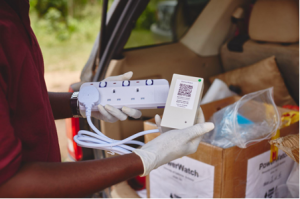
To address this data gap, we use GridWatch, a novel technology system designed to measure customer-level power outages and voltage at high spatial and temporal resolution, relatively low cost, and independently from the local utility. GridWatch enables high-resolution data collection by taking targeted subsamples of customer-level voltage quality without a sweeping smart meter installation, making the cost more approachable. PowerWatch – the GridWatch sensing device – transmits data to the cloud in near real-time over the cellular network, and stores data locally to transmit later in the case of network failure. By analyzing data from multiple devices, GridWatch can detect patterns in power outages and voltage quality issues, as well as produce key metrics about the grid such as SAIDI, SAIFI, and average hours undervoltage.2
Between 2018-2021 our research team deployed 462 devices in Ghana and 100 in Kenya, plugging the devices directly into outlets at households and firms.3 In Ghana the deployment focused on the urban Achimota, Dansoman, and Kaneshie districts in the Accra Metropolitan Area. In Kenya the deployment covers a larger geographic rural area that includes Kakamega, Kericho, Kisumu, Nandi, and Vihiga.
FIGURE 2: PowerWatch device locations
Panel A: Ghana Panel B: Kenya
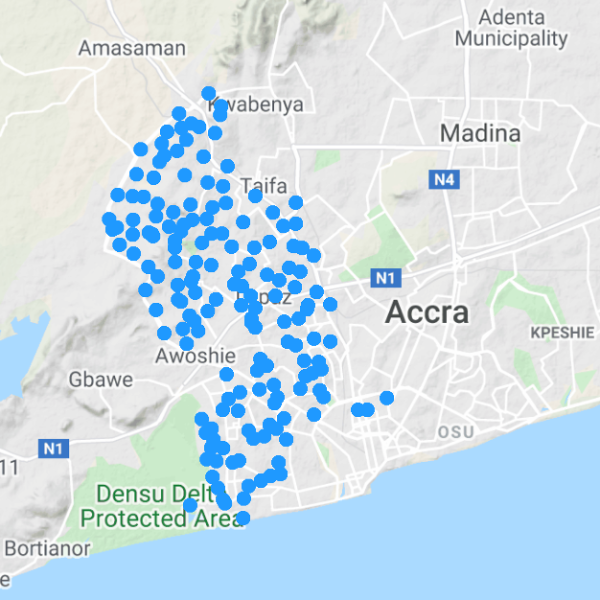
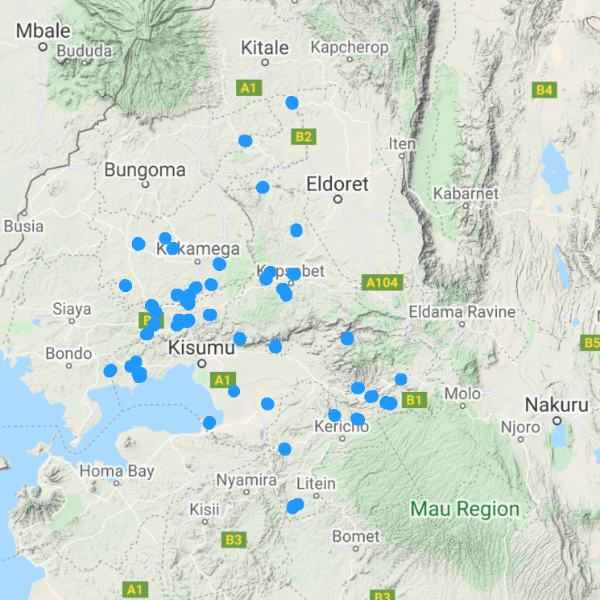
Preliminary findings
In line with international standards, target voltage in both Kenya and Ghana is 230 V. We define voltage to be low quality when it exceeds ∓10% from the target voltage. Initial analyses reveal important patterns. Both locales experience periods with poor voltage quality. Voltage quality is generally worse in urban Ghana than in rural Kenya, which could be due to differences in infrastructure quality or load. In both locations quality is lowest during the early evening, which is likely because this is when load peaks. Ongoing research seeks to identify these channels more accurately and propose policy interventions that might address these concerns.
FIGURE 3: Voltage quality by time of day
Panel A: Urban Ghana Panel B: Rural Kenya
The fraction of devices that experience poor voltage quality over hours of the day. Each observation represents the average voltage of the device within that hour.
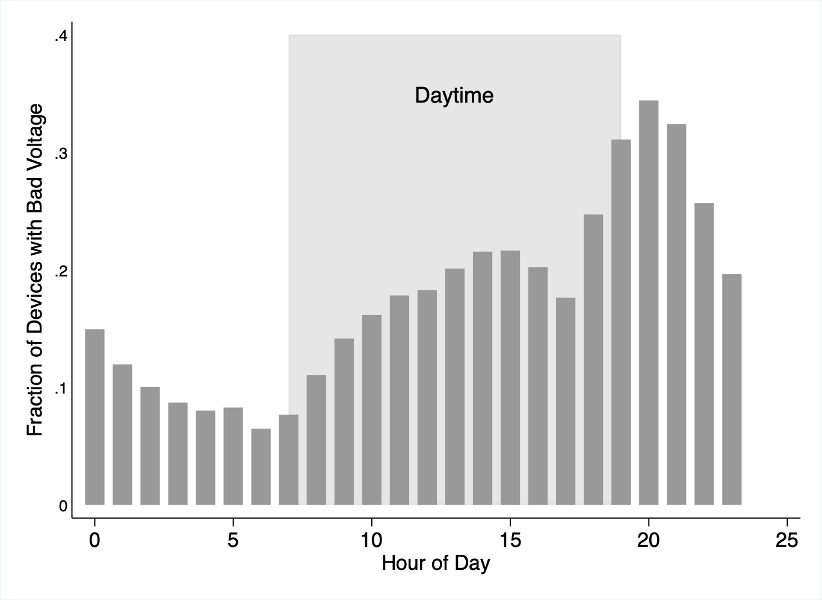
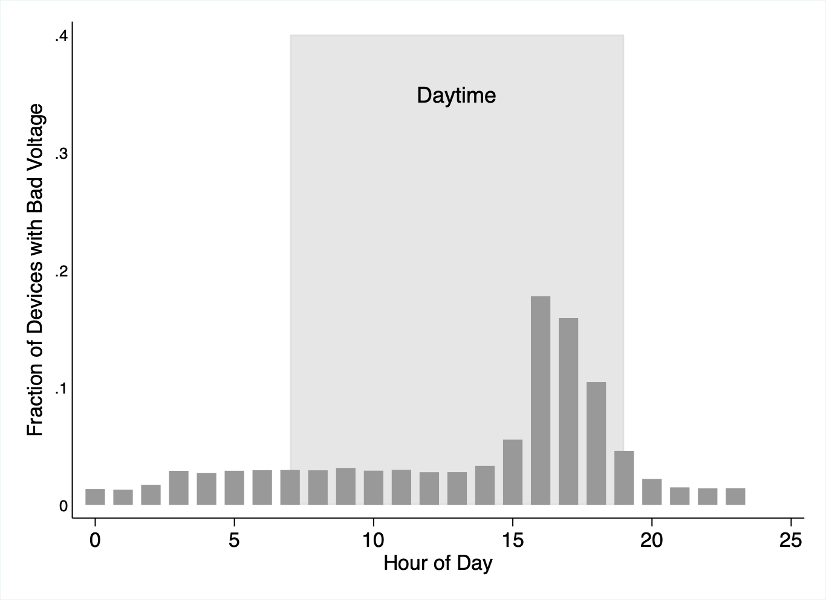
The deployment in Ghana covers multiple calendar years, allowing us to examine annual variation. The data reveal significant seasonal variation in voltage quality, with lower voltage correlating with higher temperatures.
FIGURE 4: Voltage quality by month
Fraction of time devices experience voltage categories across months. 207 and 253 are the ∓10% of the optimal voltage of 230.
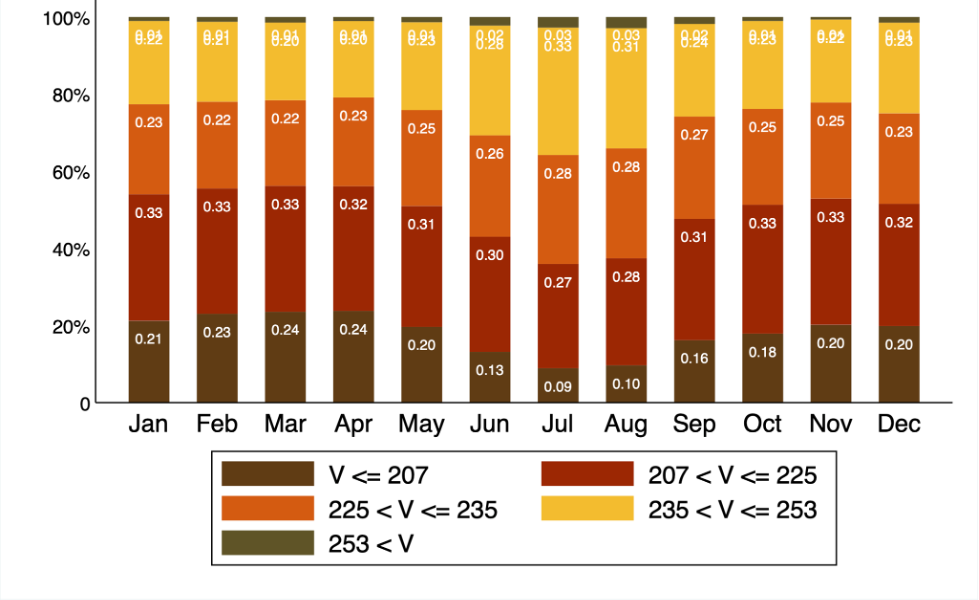
Future work
These rich analytics and real-time monitoring of the grid will enable us to answer important economic research questions.
- In Kenya, we are evaluating whether the more stringent donor conditions on infrastructure construction imposed by the World Bank relative to the African Development Bank improves power quality on the ground.4
- In Ghana, we are studying recent grid investments by the Millennium Challenge Corporation’s Ghana Power Compact. We first evaluate whether sites that received new transformer injections see an improvement in voltage quality compared to control sites that did not receive upgrades, then implement socioeconomic surveys to examine whether any experienced improvement affects key business outcomes such as productivity and investment.
The PowerWatch data also allows us to answer a number of engineering questions.
- High-resolution voltage data could help utilities better target grid improvements and repairs, and when paired with consumption data, could be used to increase the accuracy of technical loss estimates.
- More speculatively, we are doing research on using voltage data to map the structure of the grid in regions where high resolution network maps are incomplete, and automatically identify the root-cause of power outages when they occur.
Combining these data with geospatial demographic and socioeconomic data furthermore allows us to investigate whether heterogeneity in voltage quality and power outages is correlated with socioeconomic status. This work is ongoing.
To learn more about GridWatch, please visit the nLine website.
Endnotes
